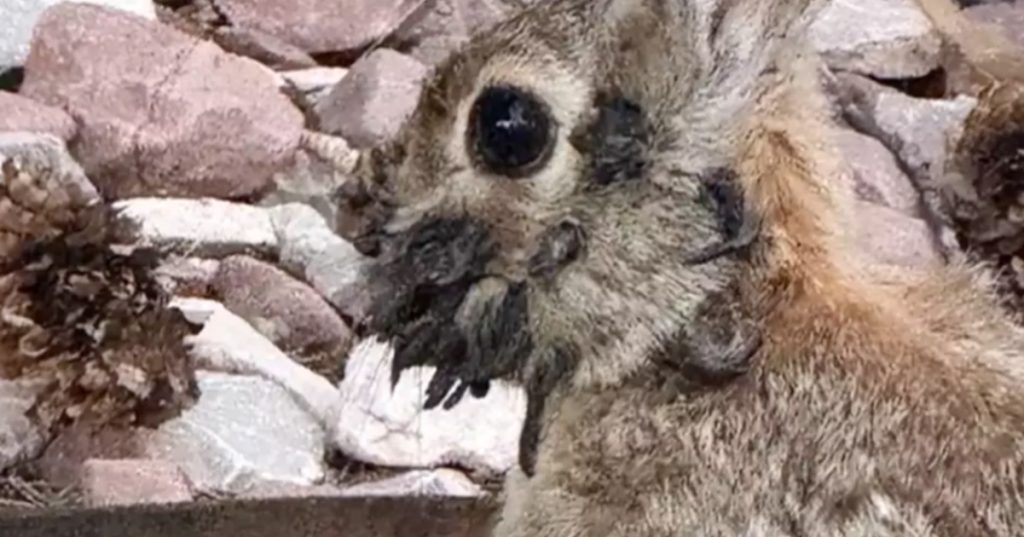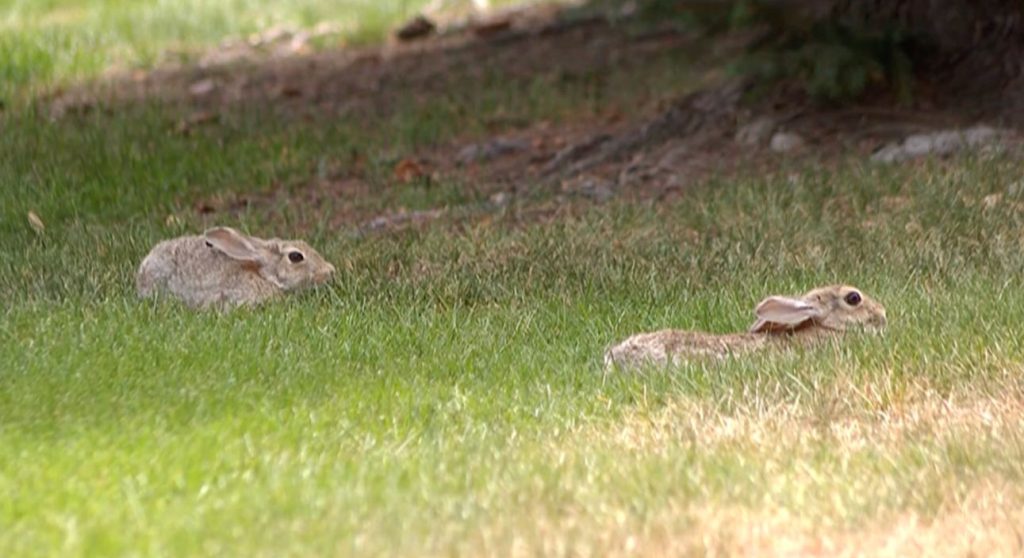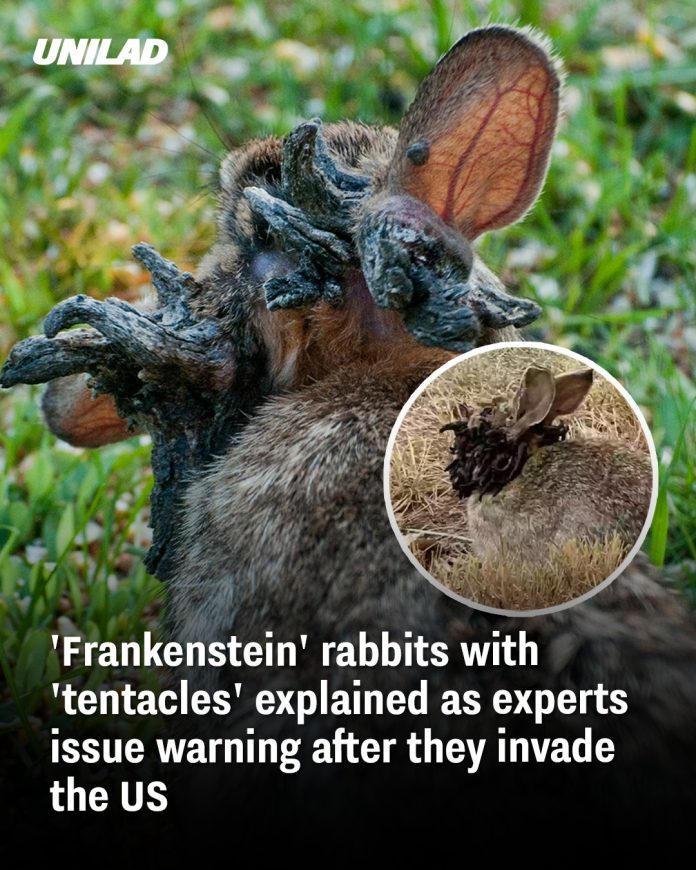Residents of Fort Collins, Colorado, have recently encountered a surreal and unsettling vision: wild rabbits with what look like black tentacles or horns protruding from their tiny faces. Find out more in the article below.
What Is Behind These Unusual Growths?
Wildlife experts, including officials from Colorado Parks and Wildlife (CPW), have identified the culprit: cottontail rabbit papilloma virus (CRPV), also known as Shope papilloma virus. This DNA-based virus induces wart-like, keratinized tumors on rabbit skin, commonly around the head, eyes, ears, and neck. At first glance, these benign tumors resemble dark spines or toothpicks, evoking comparisons to “Frankenstein rabbits” or “alien bunnies. While the visual effect is unnerving, the condition is not contagious to humans or pets and poses no direct risk beyond its aesthetic shock factor.

How the Virus Spreads and Evolves
CRPV doesn’t rely solely on direct rabbit-to-rabbit transmission. Instead, biting insects such as mosquitoes and ticks often carry the virus between animals. Infected rabbits may develop reddish, raised spots that evolve into keratinous growths resembling small horns. In some cases, these growths can turn malignant—forming squamous cell carcinomas—or grow large enough to impair the rabbit’s ability to eat, see, or hear. Wildlife officials emphasize the importance of minimal human intervention, urging residents to maintain distance and avoid attempting to feed or handle these rabbits—even though they mean no threat to people or pets.
Community Reactions and Viral Buzz
News of the “tentacle rabbits” quickly captured public imagination. On social media platforms like X (formerly Twitter), Instagram, and Facebook, locals reacted with everything from horror to fascination—labeling the animals “zombies,” “aliens,” or surreal creatures straight out of sci-fi cinema.
One Fort Collins resident, Susan Mansfield, described her repeated encounters with an afflicted rabbit:
“It looked like black quills or black toothpicks sticking out all around its mouth. I thought he’d die off during the winter, but he didn’t. He came back a second year—and it grew.”
What You Should Do—and What to Avoid
If you see one of these rabbits, here’s what experts advise:
- Do not touch or approach them. CRPV does not infect humans, but avoiding contact helps reduce stress on the animal and limits potential spread
- Keep pets away. While the virus doesn’t affect other species, it’s best to be cautious and not allow pets to interact with infected wildlife
- Let nature run its course. Most infected wild rabbits either recover naturally or face challenges due to the tumors. In domestic rabbits, veterinarians may remove growths to prevent complications.
Report sightings if concerned. Contact local wildlife authorities if you notice unusual proliferation or behavior in affected animals.

Conclusion
The mysterious sightings of “tentacled” rabbits in Fort Collins have captured public curiosity and raised important questions about wildlife health. While the strange growths are likely caused by Shope papilloma virus, the phenomenon serves as a reminder of how nature can sometimes appear both fascinating and unsettling. For scientists, it’s an opportunity to study the virus’s effects and its potential impact on rabbit populations. For locals, it’s a lesson in coexisting with wildlife while staying informed about unusual changes in the environment. In the end, these rabbits highlight the intricate—and sometimes bizarre—ways nature adapts and survives.

















